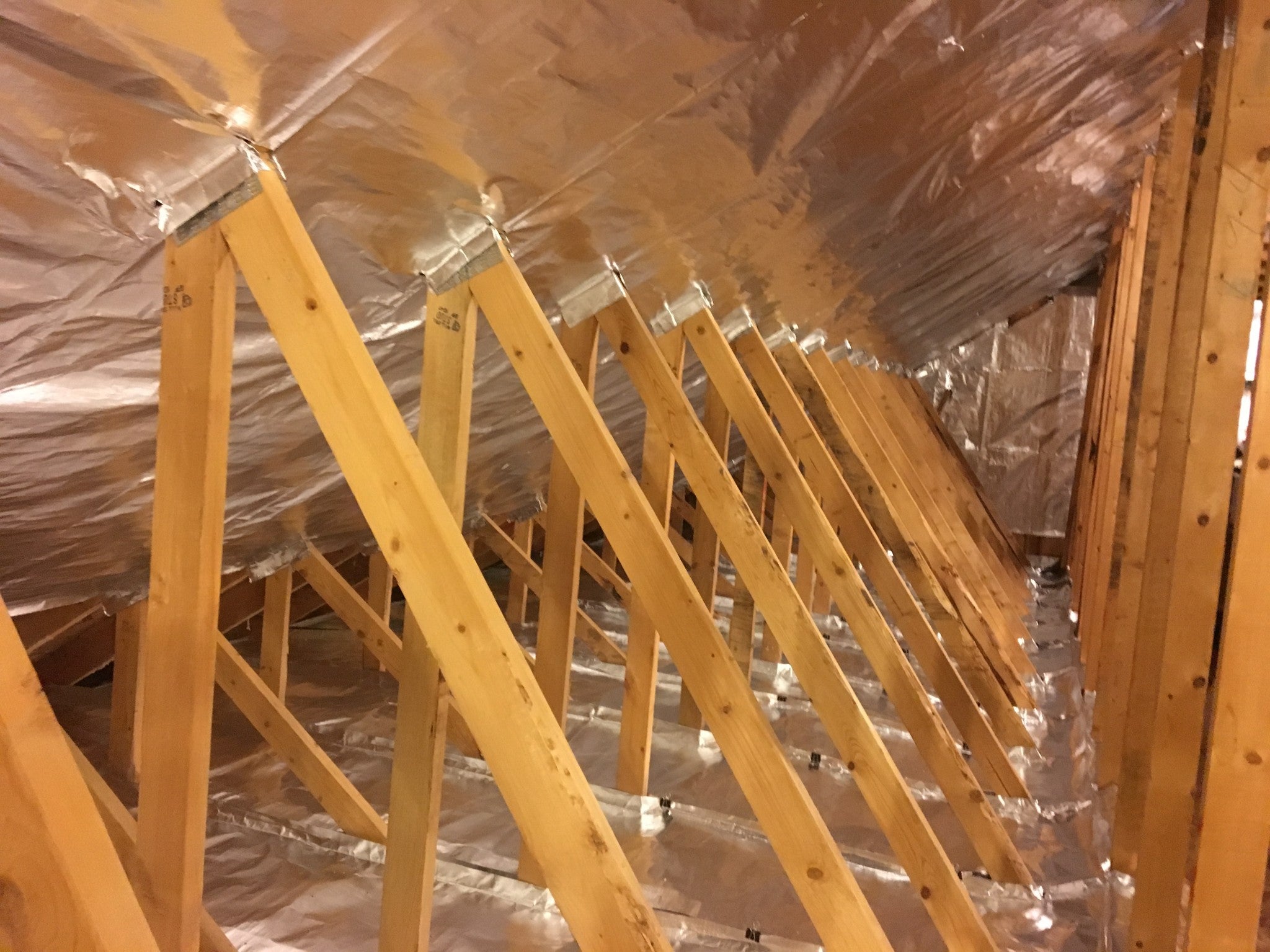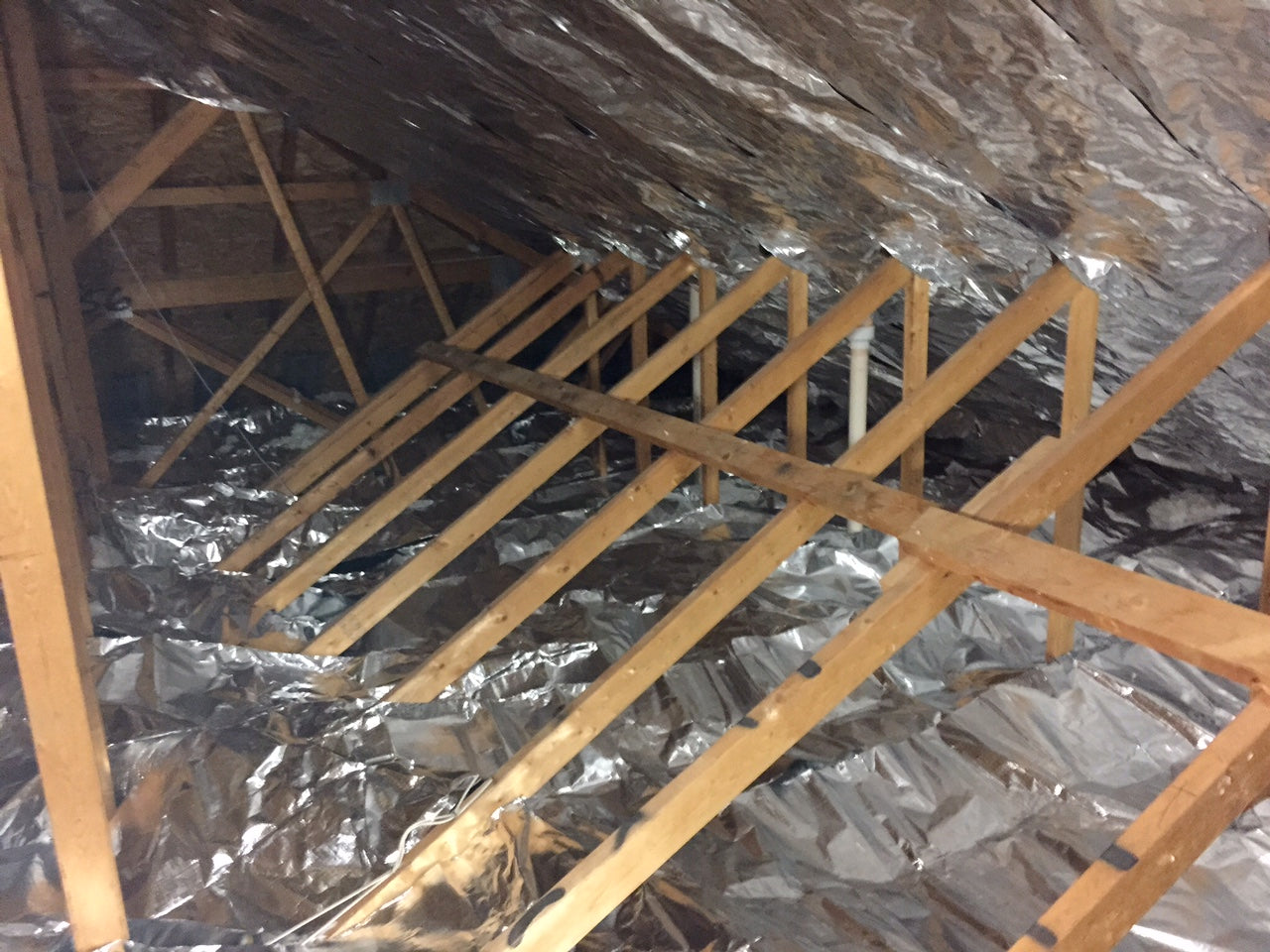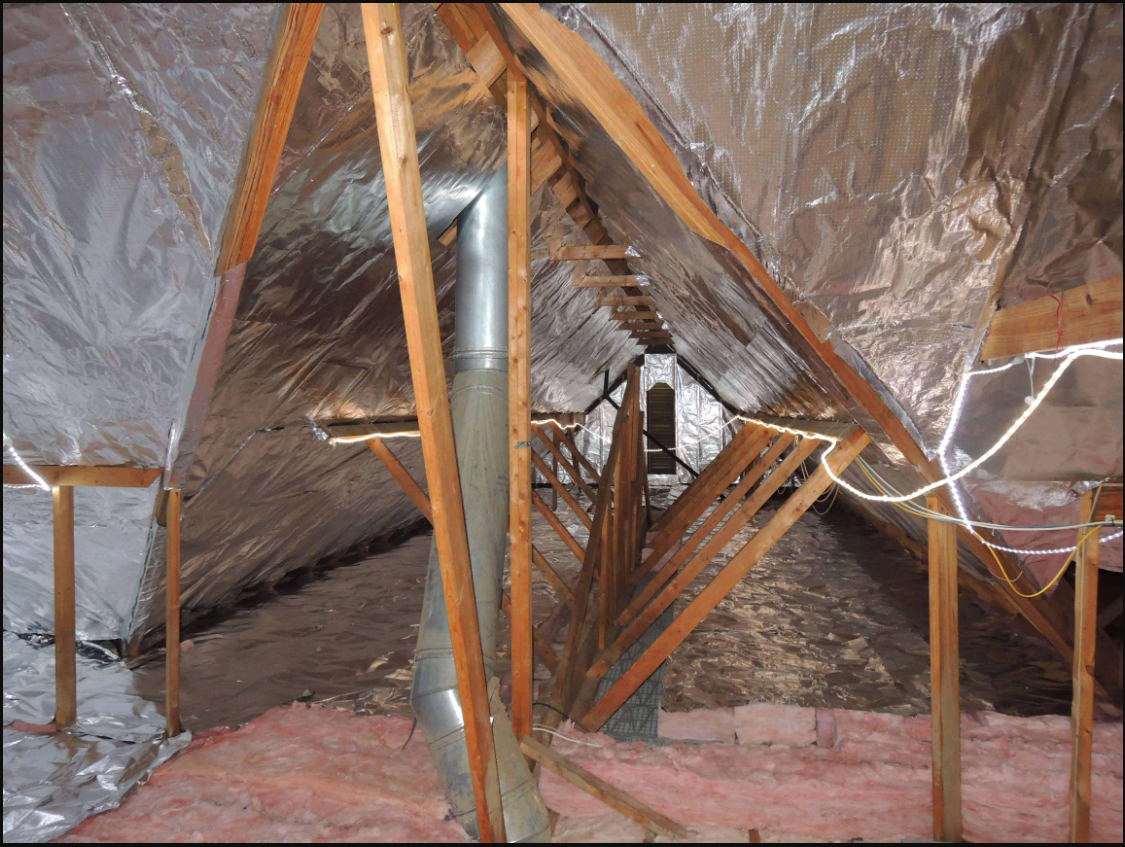Combining Staple Up & Over Insulation Methods in Tricky Attic Spaces
Several customers use the hybrid method to install their foil and it is gaining popularity as more and more people seek year round comfort and energy efficiency. This method is simply a combination of laying radiant barrier foil on the attic floor where you can’t reach to staple it up, and then stapling it up every where else.
Additionally, we have many customers who have the time and energy to fully do both methods (the complete Staple-Up method and the Over-Insulation method) and see great year round results; though it is worth mentioning that it is not essential to fully do both methods in order to see a vast improvement. One single application works to reject 97% of heat flow, whether it’s flowing into the home or out of the home.
Reasons to Consider a Hybrid Install
- These are just a couple of examples of why someone might consider the Hybrid Method of radiant barrier installation.
- You use part of your attic for storage, but the other part is open.
- You have a tall attic but don’t want to use the FlatTop Method.
- You have areas that are too hard to reach to staple up.
- You want the year-round benefits of laying the foil on your attic floor, but you have an HVAC unit (or lots of ductwork) in your attic space.
Consider your situation and decide what would be the best for you.

Start with the Staple Up Method

In this method, the radiant barrier foil is stapled on the bottom of the rafters inside the attic. During the installation you will work to leave a gap at the top and bottom of all rafters and a space is left along the ridge (peak), hips and valleys and any attic vents.
In a hybrid install, you want to go ahead and do the staple up portion of the installation first, so you have easy access to move around the space to staple and cut as needed. Once you finish stapling the foil up, move on to your approach for laying the foil over the insulation.
For more information, see How to Staple Radiant Barrier Foil to Rafters in an Attic.
Finish with an Over the Insulation Method

This is typically the easier of the two methods to install. Simply lay AtticFoil™ out over the existing insulation on the attic floor like a blanket on a bed. You don’t need to tape the seams and you don’t need to staple the foil down to the floor joists. Just cut large sheets and overlap them a few inches over one another at the seams. Do not push the foil down on top of the insulation because you want to minimize any compression of the your existing insulation. Remember to use perforated foil when laying AtticFoil™ on top of existing insulation.
When doing a hybrid method of both stapling foil up and laying it on top of insulation, remember to pay attention so you don’t accidentally block off airflow from any area. The foil should not change the air flow in your attic from how it was prior to the installation.
For more information, see How to Lay Radiant Barrier Foil Over Insulation.
PHOTOS
Browse customer photos of successful hybrid method installations in our DIY Project Gallery.
Airflow Throughout the Attic (Ventilation)

Good attic ventilation is important because keeping air moving through an attic not only keeps the air temperature cooler in the attic, but it also helps to remove moisture.
Install the foil so there is a gap at the bottom above the insulation and another gap at the top/peak of the attic.
Regardless of the type of ventilation systems you have, this is the best way to allow fresh outside air to come into the attic low and it will go one of two routes: either up the channel created by the foil (between the roof deck and the foil) or it will come into the attic below the foil.
As hot air accumulates, it will move toward the top of the attic, just like water in a bathtub migrates toward the
open drain.
The hot air will find its way out your exhaust vents (whether that is a ridge vent, gable vents, powered fans, etc.) and allowing the air to easily flow throughout the attic promotes a cooler attic air temperature as well as maximum potential for reducing moisture.




